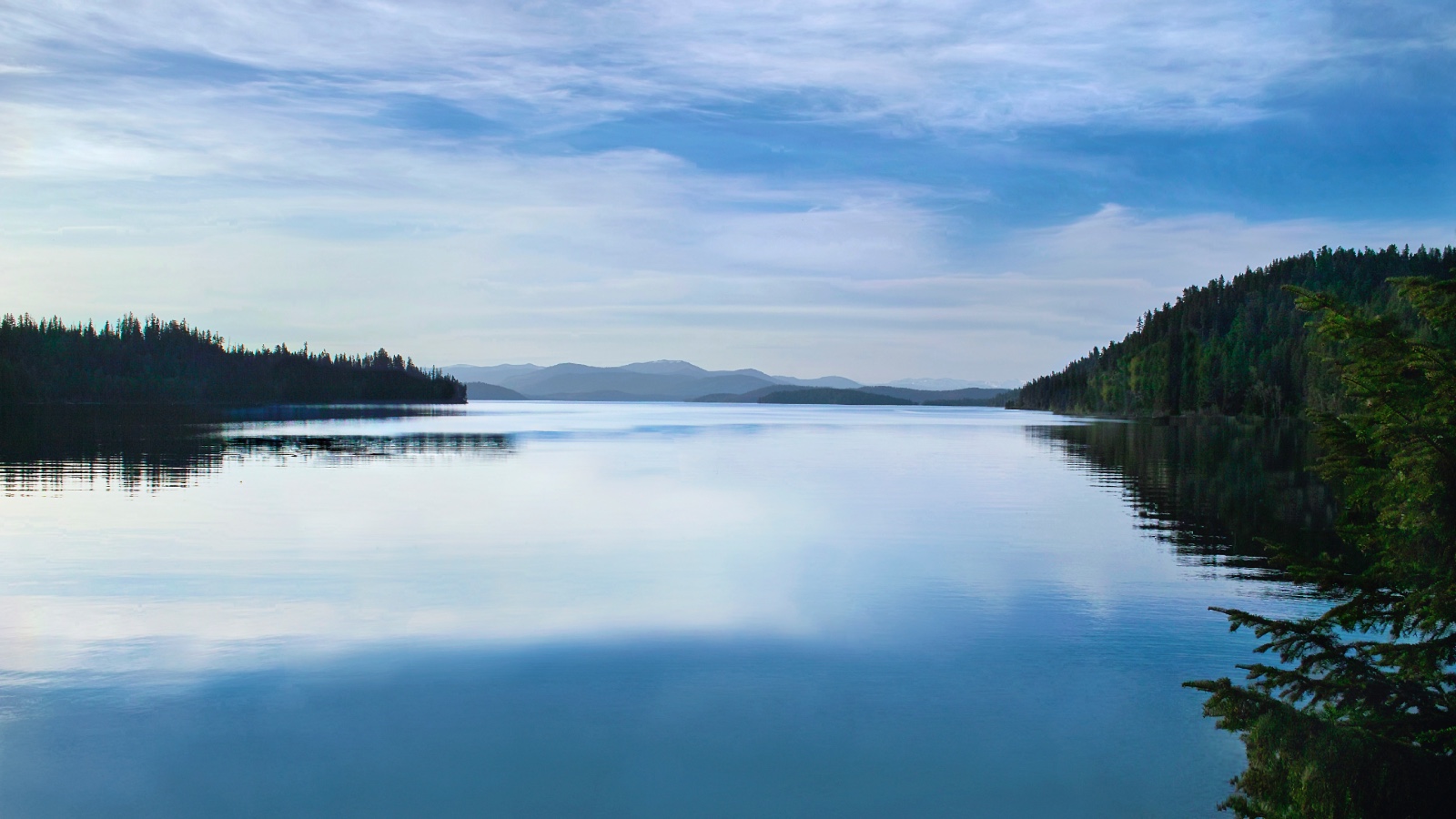Before a bipartisan Congress passed the Clean Water Act in 1972, cities pumped raw sewage into lakes, mining companies discharged acid waste into streams, and factories poured chemicals into rivers, which occasionally caught on fire. The Clean Water Act made such pollution illegal and expanded the federal government’s authority to regulate waterways across the country.
But if you haven’t gotten around to perusing the bill’s 112,000 words, you might not know that it doesn’t clarify which waterways federal agencies have the power to protect. Can factories dump waste into seasonal streams without the Environmental Protection Agency’s oversight? Wetlands? Ponds? The Clean Water Act doesn’t provide clean answers; it merely tasks the federal government with keeping toxic chemicals and other pollutants out of “navigable waters,” which it defines as “waters of the United States, including the territorial seas.”
Late last year, the Biden administration tried to clear up the half-century of confusion with a new definition of “waters of the United States.” The rule, which went into effect in March, restored protections lost in the Trump era for thousands of streams and wetlands across the country. But it faces major headwinds: States and national special interest groups have sued to reverse it; a federal judge has already halted it in 24 states; and the drama is sure to escalate any day — when the Supreme Court rules in a crucial case, Sackett v. Environmental Protection Agency. Environmental advocates worry the justices will gut the Clean Water Act by imposing a narrow reading on what counts as one of the “waters of the United States.” That is, the court’s conservative majority could decide the federal government doesn’t have the authority to protect something like half the country’s wetlands.
“The potential impact of the case is hard to overstate,” said Jon Devine, director of federal water policy at the Natural Resources Defense Council. “If the Clean Water Act can’t protect wetlands under those circumstances [in the Sackett case], we have a huge problem in trying to achieve our water quality goals.”
Ever since the Clean Water Act became law, legislators, regulators, and judges have offered various, and sometimes conflicting, ideas about how to tell if a body of water is among the “waters of the United States.” There is general agreement that the Environmental Protection Agency and Army Corps of Engineers have authority over coastal waters, lakes, rivers, and other obviously “navigable” waterways. But there’s no small amount of controversy when it comes to marshes, mires, fens, bogs, vernal pools, prairie ponds, pocosins, sloughs, small streams, seasonal streams, and rain-dependent streams.
The definition could determine the fate of millions of acres of wetlands, which are vital to healthy ecosystems across the country. One-third of the threatened and endangered species in the United States live only in wetlands such as marshes, swamps, and bogs. Those waterways also make nearby towns more resilient to disasters, acting as flood barriers by sucking up, slowing, and spreading water out. Seasonal and rain-dependent streams, which make up about 60 percent of the country’s streams, also might lose protections if the court issues a narrow Sackett ruling. Pollution in those streams could wind up in larger bodies of water that flow through towns.
“Several key programs in the Clean Water Act are linked directly to whether or not a ‘water of the United States’ is present,” Devine said. That includes programs that regulate industrial and municipal wastewater, hazardous materials, oil spills, pipeline and dam construction, and more.

The new Biden rule says that a body of water — whether a stream or pond or swamp — is subject to Clean Water Act regulations if it “significantly affects the integrity” of a waterway that indisputably falls under the federal government’s jurisdiction, like a big river. It protects a range of waterways — like some ephemeral streams and isolated wetlands — that weren’t covered by a narrower definition adopted by the Trump administration. President Donald Trump’s rule effectively said “waters of the United States” must be waterways that are navigable, such as rivers and lakes, reversing an Obama-era rule that was even more stringent than Biden’s and could have limited pollution in 50 percent of the country’s wetlands. Federal judges took issue with President Barack Obama’s rule for being too restrictive and Trump’s for being too lenient.
Biden’s new rule could soon become moot, too, if the Supreme Court conjures up a contrary “waters of the United States” definition when ruling on Sackett. In that case, a couple building a house in a boggy area near Idaho’s Priest Lake sued the EPA in 2008 after the agency told them they needed a Clean Water Act permit. The EPA said the wetlands on the property were important for the health of the lake and thus fell under the Clean Water Act’s protections. The Sacketts argued that if a wetland doesn’t have a continuous surface connection to a navigable waterway, it’s not protected by the federal law. A road between the Sacketts’ property and a tributary to the lake disrupts a visible connection between the waterways, although they are linked beneath the surface.
The Sackett case isn’t the only obstacle to cementing the Biden administration’s broader definition. Last month, a federal district judge in North Dakota, Daniel Hovland, halted the rule in 24 states, saying it was too broad and poses a threat to the states’ “sovereign rights and amounts to irreparable harm.” The Clean Water Act has created a “litany of chaos” and caused an “endless stream of lawsuits and legal challenges,” Hovland wrote.
Opponents say the new protections create permitting hurdles and add significant costs to construction projects, resource extraction, and agriculture. The new rule would make it harder for mining companies to meet the “exponential increase in demand” for minerals, National Mining Association president Rich Nolan said in a statement. The National Mining Association is one of 18 special interest groups — including the American Farm Bureau Federation, the American Petroleum Institute, and the National Association of Homebuilders — that have teamed up with the 24 states suing the Biden administration over the rule. “Farmers and ranchers should not have to hire a team of lawyers and consultants to determine how we can farm our land,” American Farm Bureau Federation president Zippy Duvall said in a statement after the group joined the suit.
Supporters say Biden’s rule generally won’t prove a burden for farmers. It retains long-standing exemptions on farming and ranching activities, like plowing and seeding, and excludes a few key agricultural features from the “waters of the U.S.” definition, like wetlands that have been converted into active farm fields, waste-treatment ponds, and some drainage ditches.
Congressional Republicans, with support from some Democrats, led a successful vote to overturn Biden’s rule, a move that Biden then vetoed. “The overreach, basically, it’s unreal,” Senator Joe Manchin of West Virginia told the Associated Press. Manchin was one of four Democrats in the Senate (along with one independent, Senator Kyrsten Sinema of Arizona) who voted to reverse the rule. An attempt in the House to override Biden’s veto failed.
Meanwhile, a range of waterways hang in the balance, from the prairie potholes — a vast collection of isolated marshes in the Midwest, half of which have already been destroyed by commercial activity and agriculture — to Georgia’s Okefenokee Swamp. Under the Trump-era definition of “waters of the United States,” a mining company, Twin Pines Minerals, didn’t need a Clean Water Act permit to destroy hundreds of acres of wetlands near the swamp. But those wetlands almost certainly would count as “waters of the United States” under the Biden rule, much as they did prior to the Trump rule, and should be protected, said Kelly Moser, senior attorney at the Southern Environmental Law Center. The Supreme Court’s ruling on Sackett — expected by June — could change that.
“In the South, we rely on our wetlands,” Moser said. “We have some optimism that the court will do the right thing and follow the objective of the Clean Water Act, just like they did a few years ago in the County of Maui case.” In that 2020 ruling, the Supreme Court determined that polluting groundwater—which isn’t considered among the “waters of the United States” — is subject to federal regulation if that groundwater substantially feeds into a body of water protected by the Clean Water Act.
Anthony Moffa, an environmental law professor at the University of Maine and a former EPA attorney, said he suspects the court’s Sackett opinion will undo the Biden rule, even though it aligns with decades of regulatory precedent.
Still, no matter how the court rules, Moffa thinks lawyers, regulators, and policymakers will continue arguing over “waters of the United States” and interpreting the law in contrasting ways. Fifty years of fighting over a definition is unlikely to come to an end so quickly.
“If the EPA is concerned about a wetland, they will try to find a way to regulate it,” Moffa said. “I don’t think that there’s one version of this that’s going to [let] everyone avoid paying lawyers in cases that are close.”




